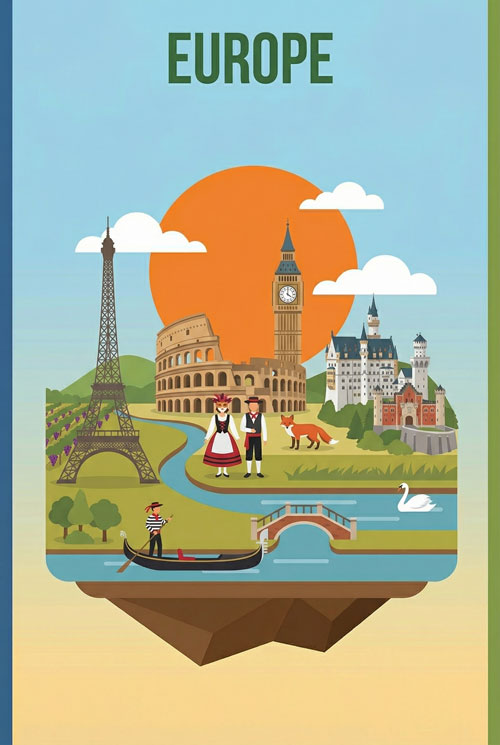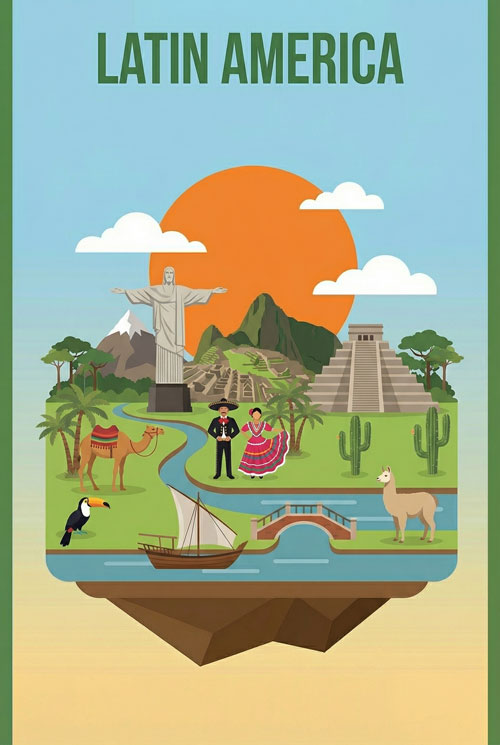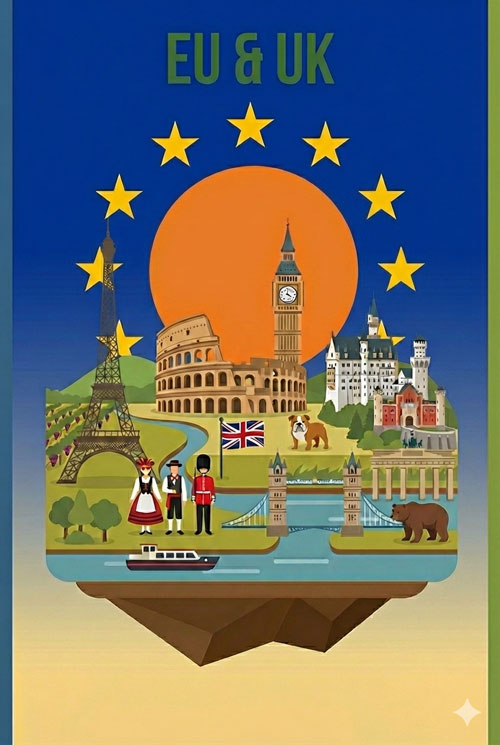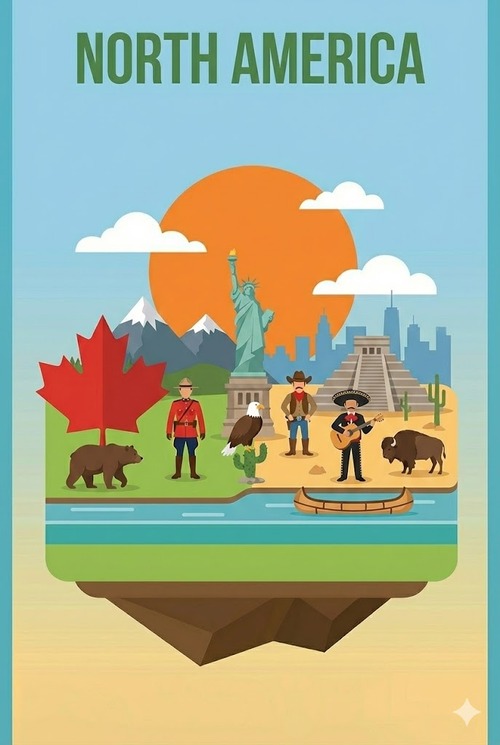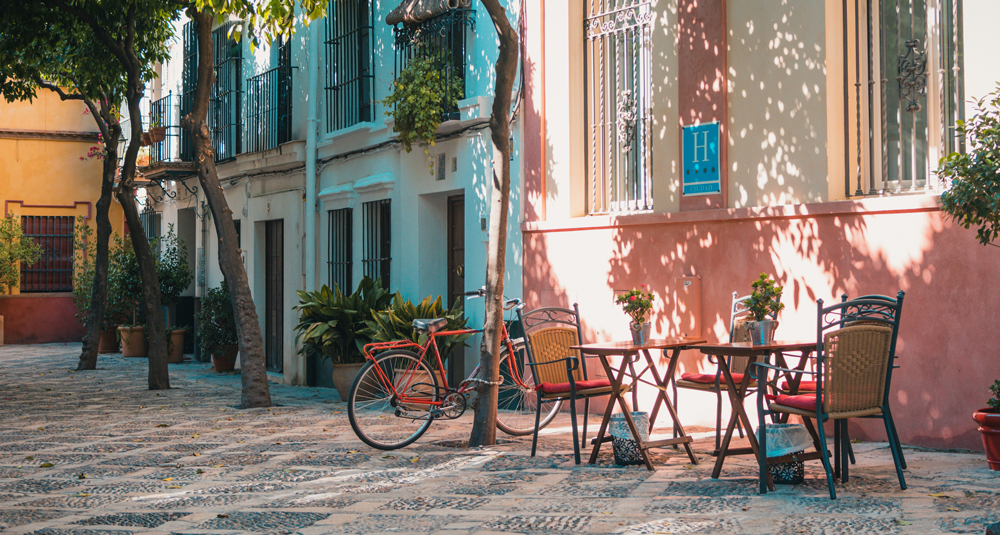Travel
Best Time to Visit Spain
Spain is a country of diverse landscapes, rich cultural heritage, and varying climates. From the sun-drenched beaches of the Mediterranean to the snow-capped peaks of the Pyrenees, timing your visit can make all the difference in experiencing the best of what Spain has to offer.
This comprehensive guide will help you plan the perfect Spanish adventure, taking into account weather patterns, regional variations, festivals, and special events throughout the year.
Seasonal Overview of Spain
Spring (March to May)
Spring in Spain brings mild temperatures and blooming landscapes, making it one of the most pleasant times to visit. The weather is ideal for outdoor activities and cultural exploration, with temperatures ranging from 15-25°C (59-77°F). During this season, the countryside comes alive with wildflowers, and cities buzz with energy as locals emerge from winter to enjoy outdoor cafes and parks.
Spring weather in Spain is characterized by mild temperatures and occasional rain showers, creating perfect conditions for exploring cities on foot or hiking in the countryside. The evenings remain comfortable, ideal for enjoying Spain’s famous outdoor dining culture. This is also when many of Spain’s most significant cultural events take place, including the dramatic Holy Week (Semana Santa) processions and the prestigious Madrid Open tennis tournament.
Visitor numbers during spring are moderate, with a notable peak during Easter celebrations. However, even during these busier periods, the pleasant weather and festive atmosphere make it a worthwhile time to visit. The combination of comfortable temperatures, cultural events, and relatively manageable crowd levels makes spring one of the best seasons to experience Spain.
Summer (June to August)
Summer in Spain transforms the country into a sun-drenched paradise, though the intense heat in central and southern regions can be challenging for some visitors. During these months, temperatures regularly soar to 30-40°C (86-104°F), particularly in inland cities like Madrid and Seville. The heat makes midday activities challenging in many areas, leading to the traditional siesta period when many businesses close during the hottest hours.
This is when Spain’s famous coastal regions come alive, with beaches along the Mediterranean and Atlantic shores filling with sunbathers and water sports enthusiasts. The northern regions, including Asturias, Galicia, and the Basque Country, offer a more temperate summer climate, making them ideal destinations for those seeking to escape the intense heat of the south.
Summer also brings Spain’s most famous festivals, including the Running of the Bulls in Pamplona and La Tomatina in Buñol. These events, while exciting, draw large crowds and require advance planning. This is also peak tourist season, particularly in coastal areas and major cities, resulting in higher prices and the need to book accommodations well in advance.
Autumn (September to November)
Autumn offers a delightful sweet spot in Spain’s calendar, combining pleasant temperatures with reduced crowds. As the summer heat gradually subsides, temperatures settle into a comfortable range of 15-25°C (59-77°F). This season brings occasional rainfall, particularly in northern regions, but these showers are typically short-lived and help create the lush landscapes Spain is known for.
This is an excellent time for wine enthusiasts, as many regions celebrate their grape harvests with festivals and special events. The wine regions of La Rioja and Ribera del Duero are particularly beautiful during this season, with vineyards displaying autumn colors and towns hosting harvest celebrations. Cultural tourism thrives in autumn, with major cities like Barcelona, Madrid, and Seville offering perfect conditions for exploring museums, historic sites, and architectural wonders.
The Mediterranean coast remains warm enough for beach activities well into October, but without the overwhelming crowds of summer. This combination of pleasant weather, cultural activities, and fewer tourists makes autumn an ideal time for those seeking a more authentic Spanish experience.
Winter (December to February)
Winter in Spain reveals a different side of the country, with dramatic variations between regions. Along the Mediterranean coast, winters remain mild and pleasant, with temperatures typically ranging from 5-15°C (41-59°F). This makes cities like Barcelona and Valencia attractive winter destinations, offering cultural experiences without the summer crowds.
In the mountainous regions, particularly the Pyrenees and Sierra Nevada, winter brings reliable snow and excellent conditions for skiing and winter sports. These areas transform into winter sports destinations, attracting both domestic and international visitors to their well-maintained slopes and cozy mountain resorts.
The season is marked by festive celebrations, beginning with elaborate Christmas markets and continuing through Three Kings Day in January. Major cities are beautifully decorated, and traditional winter treats appear in cafes and markets. While tourist numbers are generally lower during winter, prices can spike during the Christmas and New Year period, particularly in popular ski areas.
Regional Climate Variations
Spain’s diverse geography creates distinct climate zones, each offering unique experiences throughout the year. Understanding these regional variations is crucial for planning your visit effectively.
Central Spain, dominated by the Meseta plateau, experiences a continental climate with extreme temperature variations. Summers in Madrid and surrounding areas can be intensely hot, while winters bring cold temperatures and occasional snow. The shoulder seasons of spring and autumn offer the most pleasant conditions for exploring this region’s rich cultural heritage.
The Mediterranean coast enjoys mild winters and hot summers, with the sea moderating temperatures year-round. This region, including the Costa del Sol and Costa Brava, is most popular during summer but can be equally enjoyable in spring and autumn when temperatures are milder and crowds are thinner.
Northern Spain presents a stark contrast to the rest of the country, with a climate more similar to Western Europe. The regions of Galicia, Asturias, and the Basque Country receive more rainfall throughout the year but enjoy milder summers, making them perfect destinations when the rest of Spain swelters in summer heat.
Southern Spain, particularly Andalusia, experiences the country’s highest temperatures, with summers that can be overwhelmingly hot. However, this region’s mild winters make it an attractive destination from late autumn through early spring, when visitors can explore historic cities like Seville and Granada in comfort.
The Spanish islands, including the Balearics and Canaries, benefit from Mediterranean and subtropical climates respectively. The Balearic Islands mirror the seasonal patterns of coastal Spain, while the Canary Islands enjoy spring-like temperatures year-round, making them popular winter sun destinations.
Monthly Weather Guide
| Month | Average Temperature | Rainfall | Recommended Activities |
|---|---|---|---|
| January | 5-15°C (41-59°F) | Moderate | Skiing, museums, winter sales |
| February | 6-16°C (43-61°F) | Moderate | Cultural visits, winter sports |
| March | 8-19°C (46-66°F) | Moderate | City tours, spring festivals |
| April | 10-21°C (50-70°F) | Light | Easter celebrations, outdoor activities |
| May | 14-24°C (57-75°F) | Light | Hiking, city exploration |
| June | 18-29°C (64-84°F) | Very Light | Beach activities, festivals |
| July | 21-33°C (70-91°F) | Very Light | Coastal activities, northern Spain |
| August | 21-33°C (70-91°F) | Very Light | Beach holidays, festivals |
| September | 18-29°C (64-84°F) | Light | Wine harvests, cultural events |
| October | 14-24°C (57-75°F) | Moderate | City tours, hiking |
| November | 9-19°C (48-66°F) | Moderate | Cultural visits, food festivals |
| December | 6-16°C (43-61°F) | Moderate | Christmas markets, skiing |
Events and Festivals
Spring Festivals (March to May)
Spring in Spain erupts with some of the country’s most spectacular celebrations. The season begins with Las Fallas in Valencia (March 15-19), where hundreds of elaborate papier-mâché sculptures are displayed throughout the city before being ceremoniously burned in a spectacular night of fire. This unique festival combines artistry, satire, and pyrotechnics in a way that’s distinctly Valencian.
Semana Santa (Holy Week) transforms cities across Spain, with Seville hosting particularly dramatic processions. Hooded penitents carry ancient religious statues through candlelit streets, while haunting saetas (flamenco prayers) echo off medieval walls. The celebrations culminate in Easter Sunday festivities that blend religious devotion with joyous celebration.
April brings the colorful Feria de Abril in Seville, where locals dress in traditional flamenco attire and celebrate in casetas (private tents) filled with dancing, food, and sherry. The Madrid Open tennis tournament attracts international sports fans, while the San Isidro festival honors Madrid’s patron saint with bullfights, concerts, and traditional zarzuela performances.
Summer Festivals (June to August)
Summer ignites with the Night of San Juan (June 23), when bonfires light up beaches across Spain, especially dramatic along the Mediterranean coast. People jump over fires and swim at midnight in ancient rituals welcoming summer.
July brings the internationally famous San Fermín festival in Pamplona (July 6-14), known for the running of the bulls. While the encierro (bull run) captures headlines, the festival is a week-long celebration of Basque culture with music, dance, and traditional sports.
August sees La Tomatina in Buñol, Valencia (last Wednesday of August), where thousands gather for the world’s largest food fight. The month also features countless local festivals, from the Festa Major de Gràcia in Barcelona, where neighborhoods compete to create elaborate street decorations, to the Feria de Málaga, blending flamenco, wine, and seafood in Andalusian style.
Autumn Festivals (September to November)
Autumn begins with wine harvest festivals across Spain’s wine regions. The Rioja Wine Harvest Festival in Logroño features grape crushing ceremonies, parades, and the blessing of the new wine. In Jerez, the Sherry Festival combines wine tasting with equestrian shows and flamenco performances.
Barcelona celebrates its patron saint during La Mercè (September), transforming the city with human towers (castells), fire-breathing dragons (correfoc), and outdoor concerts. The San Sebastián Film Festival draws international cinema stars and premieres, while the Bienal de Flamenco in Seville (held in even-numbered years) presents the world’s largest flamenco festival.
October brings mushroom festivals in Catalonia’s mountain villages and the Fiesta del Pilar in Zaragoza, where thousands offer flowers to create a massive cloak for the Virgin Mary. November features the Chestnuts and Mushrooms Festival in Extremadura, celebrating autumn’s bounty with traditional gastronomy.
Winter Festivals (December to February)
Winter festivities begin with the illumination of spectacular Christmas lights in major cities, particularly Madrid’s Gran Vía and Barcelona’s Passeig de Gràcia. Traditional Christmas markets, like Barcelona’s Fira de Santa Llúcia, sell crafts, decorations, and the unique Catalan figure of the caganer.
New Year’s Eve (Nochevieja) is celebrated nationwide with the tradition of eating twelve grapes at midnight, one with each chime of the clock. Madrid’s Puerta del Sol is the epicenter of these celebrations, broadcast across the Spanish-speaking world.
The holiday season culminates with Three Kings Day (January 6), Spain’s main Christmas celebration. Elaborate parades on January 5 feature the Three Wise Men distributing candy to children, while families gather the next day for traditional roscón de reyes cake. February brings carnival celebrations, with the most famous in Cádiz and Tenerife, featuring weeks of music, satire, and costume parades that rival Rio’s carnival in creativity and energy.
Best Times to Visit
Late Spring (April to May)
Late spring is an excellent time to visit Spain, offering pleasant temperatures across all regions. This period is characterized by mild weather, with temperatures ranging from 10-21°C (50-70°F), making it ideal for outdoor activities and sightseeing. Easter celebrations and spring festivals add to the festive atmosphere, though visitor numbers are moderate, with a notable peak during Easter.
Early Autumn (September to October)
Early autumn is another prime time to visit Spain, with warm but not hot temperatures and reduced crowds. This season brings occasional rainfall, particularly in northern regions, but these showers are typically short-lived and help create the lush landscapes Spain is known for. The wine harvest season is in full swing, and cultural tourism thrives, with major cities offering perfect conditions for exploring museums, historic sites, and architectural wonders.
Peak Season Considerations
Summer (June to August)
Summer is peak tourist season in Spain, particularly in coastal areas and major cities. While the weather is perfect for beach activities and festivals, the intense heat in central and southern regions can be challenging. This is also the time for Spain’s most famous festivals, including the Running of the Bulls in Pamplona and La Tomatina in Buñol, which draw large crowds and require advance planning.
Special Events Worth Planning Around
Spain is known for its vibrant festivals and events, which can greatly enhance your travel experience. Some of the most notable events include Las Fallas in Valencia, Semana Santa (Holy Week) celebrations throughout Spain, San Fermín (Running of the Bulls) in Pamplona, La Tomatina in Buñol, and Christmas and Three Kings Day celebrations.
Stay Connected in Spain
Need Mobile Data While Traveling in Spain?
Stay connected throughout your Spanish adventure with an eSIM – the modern alternative to traditional SIM cards.
Instant activation means you can start using your eSIM as soon as you arrive in Spain, without the need to wait for physical delivery. You can keep your home number active while using local data, and coverage is available across all Spanish regions. Competitive rates compared to roaming charges make eSIMs an attractive option for travelers.
Multiple data packages are available to suit your needs, and easy top-up options ensure you never run out of data. Click here to see our Spain eSIM plans!
Final Tips
When planning your trip to Spain, consider booking accommodations well in advance for summer and festival periods. Northern Spain is an excellent destination during summer to avoid the intense heat of the south. Many businesses close for siesta in the afternoon, especially in smaller towns, and August is when many locals take their holidays, so some businesses may be closed.
Spring and autumn offer the best balance of weather and crowds, while winter can be an excellent time for cultural visits and skiing. Whatever time you choose to visit, Spain’s rich culture, stunning landscapes, and warm hospitality ensure an unforgettable experience.
Spain’s diverse regions and climate zones mean there’s no single “perfect” time to visit – it depends on your interests and which parts of the country you plan to explore. However, the shoulder seasons of spring and autumn generally offer the best combination of pleasant weather, reasonable prices, and manageable crowds. Whatever time you choose to visit, Spain’s rich culture, stunning landscapes, and warm hospitality ensure an unforgettable experience.
Related articles






